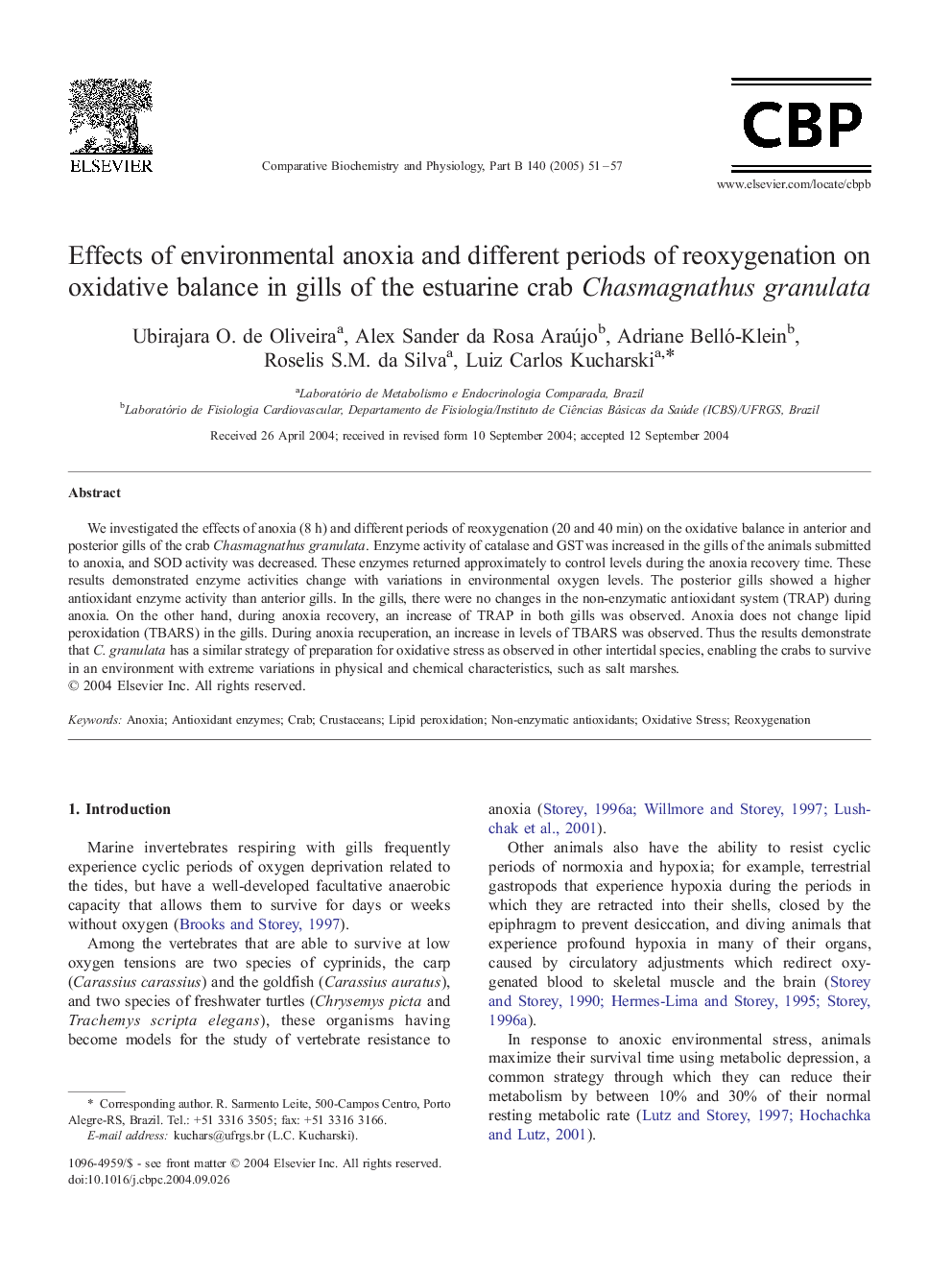| Article ID | Journal | Published Year | Pages | File Type |
|---|---|---|---|---|
| 10820808 | Comparative Biochemistry and Physiology Part B: Biochemistry and Molecular Biology | 2005 | 7 Pages |
Abstract
We investigated the effects of anoxia (8 h) and different periods of reoxygenation (20 and 40 min) on the oxidative balance in anterior and posterior gills of the crab Chasmagnathus granulata. Enzyme activity of catalase and GST was increased in the gills of the animals submitted to anoxia, and SOD activity was decreased. These enzymes returned approximately to control levels during the anoxia recovery time. These results demonstrated enzyme activities change with variations in environmental oxygen levels. The posterior gills showed a higher antioxidant enzyme activity than anterior gills. In the gills, there were no changes in the non-enzymatic antioxidant system (TRAP) during anoxia. On the other hand, during anoxia recovery, an increase of TRAP in both gills was observed. Anoxia does not change lipid peroxidation (TBARS) in the gills. During anoxia recuperation, an increase in levels of TBARS was observed. Thus the results demonstrate that C. granulata has a similar strategy of preparation for oxidative stress as observed in other intertidal species, enabling the crabs to survive in an environment with extreme variations in physical and chemical characteristics, such as salt marshes.
Keywords
Related Topics
Life Sciences
Biochemistry, Genetics and Molecular Biology
Biochemistry
Authors
Ubirajara O. de Oliveira, Alex Sander da Rosa Araújo, Adriane Belló-Klein, Roselis S.M. da Silva, Luiz Carlos Kucharski,
